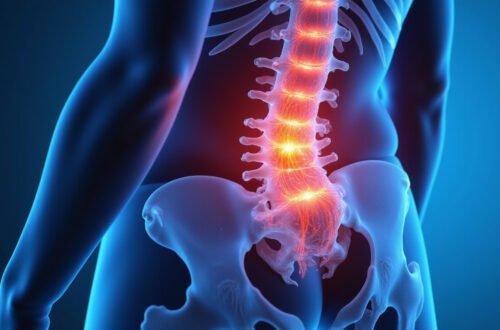If you’re experiencing lower back pain that radiates down your leg, a sciatic nerve test might be necessary to determine whether sciatic nerve irritation or compression is the cause. Diagnosing sciatic nerve pain early can help provide relief and prevent further complications. This guide explores top sciatic nerve test techniques that healthcare professionals use to evaluate your condition quickly and accurately.
Understanding Sciatic Nerve Pain
The sciatic nerve is the longest nerve in the human body, running from the lower back, through the hips and buttocks, and down each leg. When this nerve is irritated or compressed, it can lead to a condition known as sciatica, characterized by sharp, shooting pain, numbness, tingling, or weakness along the nerve’s path.
To accurately identify whether these symptoms stem from sciatic nerve involvement, your healthcare provider will perform specific sciatic nerve test maneuvers designed to reproduce or alleviate your pain.
Why Are Sciatic Nerve Tests Important?
Sciatic nerve pain can mimic other conditions such as lumbar disc herniation, piriformis syndrome, or spinal stenosis. Using targeted diagnostic tests helps differentiate the cause and guides effective treatment plans. Prompt diagnosis through these tests can significantly improve recovery duration and reduce the risk of chronic pain.
Top Sciatic Nerve Test Techniques
Here are the most commonly used and effective sciatic nerve test techniques that clinicians rely on:
1. Straight Leg Raise (SLR) Test
The Straight Leg Raise test is one of the most widely used methods to assess nerve root irritation or compression affecting the sciatic nerve.
- How it’s done: You lie flat on your back with legs straight. The examiner lifts your affected leg while keeping the knee straight.
- Positive result: If lifting the leg between 30° and 70° causes sharp pain radiating down the leg, the test is positive, indicating possible sciatic nerve involvement.
- Why it works: Raising the leg stretches the sciatic nerve and nerve roots, reproducing symptoms if they are compressed or inflamed.
2. Slump Test
The Slump test assesses nerve tension and mobility by combining spinal flexion with leg extension, which stretches the sciatic nerve.
- How it’s done: Seated on the edge of an examination table, you slump your back forward and bring your chin to your chest. Then, with your knee bent, you straighten the leg.
- Positive result: Pain or reproduction of sciatic symptoms during any stage suggests nerve tension or compression.
- Significance: This test isolates neural structures and helps differentiate nerve irritation from muscular or joint pain.
3. Bragard’s Sign
This test is an extension of the Straight Leg Raise and helps confirm sciatic nerve irritation.
- Procedure: After a positive SLR test, the leg is lowered slightly and the foot is dorsiflexed (toes pulled up toward you).
- Positive result: Increased sciatic pain during dorsiflexion indicates nerve root irritation.
- Purpose: The maneuver further stretches the sciatic nerve, confirming neural involvement.
4. Crossed Straight Leg Raise Test
This test helps identify the side of nerve root compression.
- How it’s done: The examiner lifts the unaffected leg while you lie on your back.
- Positive result: If pain occurs in the opposite affected leg, it indicates a more severe nerve root compression.
- Clinical value: A positive crossed SLR test is highly specific for lumbar disc herniation pressing on the sciatic nerve.
Additional Tests That Support Sciatic Nerve Diagnosis
Piriformis Test
Since the piriformis muscle lies close to the sciatic nerve, tightness or spasm can compress the nerve. This test evaluates if piriformis syndrome is causing pain mimicking sciatica.
- Process: With you lying on your back, the examiner flexes, adducts, and internally rotates the hip.
- Result: Pain or reproduction of sciatic pain indicates possible piriformis muscle involvement.
Neurological Examination
A thorough neurological exam examines muscle strength, reflexes, and sensation along the sciatic nerve pathway to gauge nerve function.
- Reflex testing (such as the Achilles reflex) and sensory testing provide clues about nerve root involvement.
How to Prepare for a Sciatic Nerve Test
Before your appointment:
- Wear comfortable, loose clothing to allow easy access for movements.
- Be ready to describe your symptoms in detail, including the pain location, intensity, and when it worsens.
- Inform your healthcare provider about any recent injuries or medical conditions.
Summary of Sciatic Nerve Test Techniques
| Test Name | Methodology | What It Detects | Positive Sign |
|---|---|---|---|
| Straight Leg Raise (SLR) | Raising leg with straight knee | Sciatic nerve irritation | Radiating leg pain between 30°-70° leg elevation |
| Slump Test | Sitting with spinal flexion, leg extension | Neural tension/compression | Reproduction of sciatic symptoms |
| Bragard’s Sign | Dorsiflexion after SLR | Confirmation of nerve irritation | Increased sciatic pain on foot dorsiflexion |
| Crossed Straight Leg Raise | Raising unaffected leg | Nerve root compression severity | Pain on opposite leg |
| Piriformis Test | Hip flexion, adduction, internal rotation | Piriformis syndrome | Reproduction of sciatic pain |
Frequently Asked Questions About Sciatic Nerve Testing
Q1: How accurate are sciatic nerve tests at diagnosing sciatica?
A1: When performed correctly, tests like the Straight Leg Raise have high sensitivity for sciatica diagnosis. However, they are often combined with imaging studies like MRI for full assessment (source).
Q2: Can a sciatic nerve test be done at home?
A2: Some tests, such as the Straight Leg Raise, can be cautiously self-administered but are best conducted by a healthcare professional to ensure accuracy and safety.

Q3: Are these sciatic nerve tests painful?
A3: The tests may temporarily reproduce your pain to indicate nerve involvement. However, the discomfort is generally brief and controlled by the examiner.
When to See a Doctor About Sciatic Nerve Pain
If you experience persistent or worsening symptoms like severe leg pain, muscle weakness, numbness, or loss of bladder or bowel control, seek medical attention immediately. Early diagnosis through proper sciatic nerve testing can prevent long-term damage and improve your quality of life.
Final Thoughts: Get a Quick and Accurate Diagnosis for Your Sciatic Pain
If you suspect sciatic nerve pain, don’t wait to get evaluated. Utilizing these top sciatic nerve test techniques can pinpoint the source of your discomfort and lead to timely, effective treatment. Whether you’re self-monitoring or visiting a healthcare provider, understanding these tests empowers you to advocate for your health and move toward pain relief.
Take the first step now: schedule a consultation with a spine specialist or physical therapist skilled in sciatic nerve assessment to get a precise diagnosis and start your journey toward recovery. Your pain-free life is just a test away!






